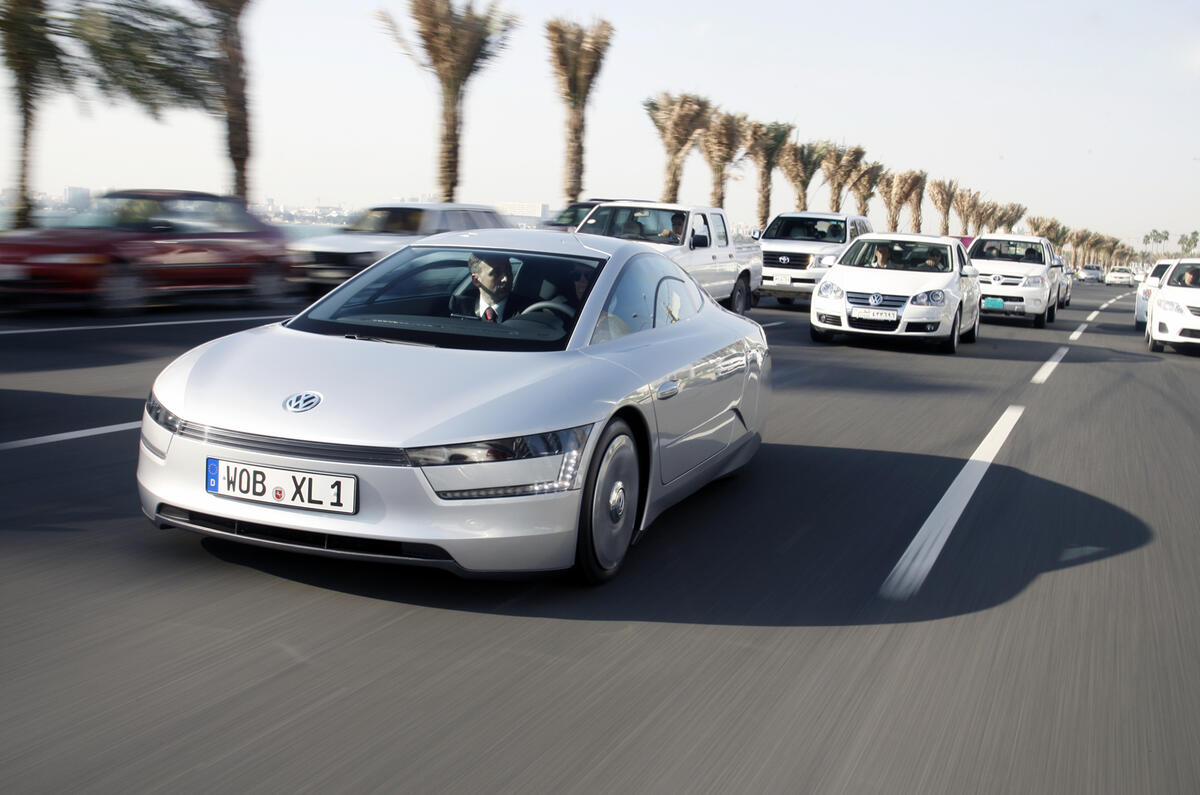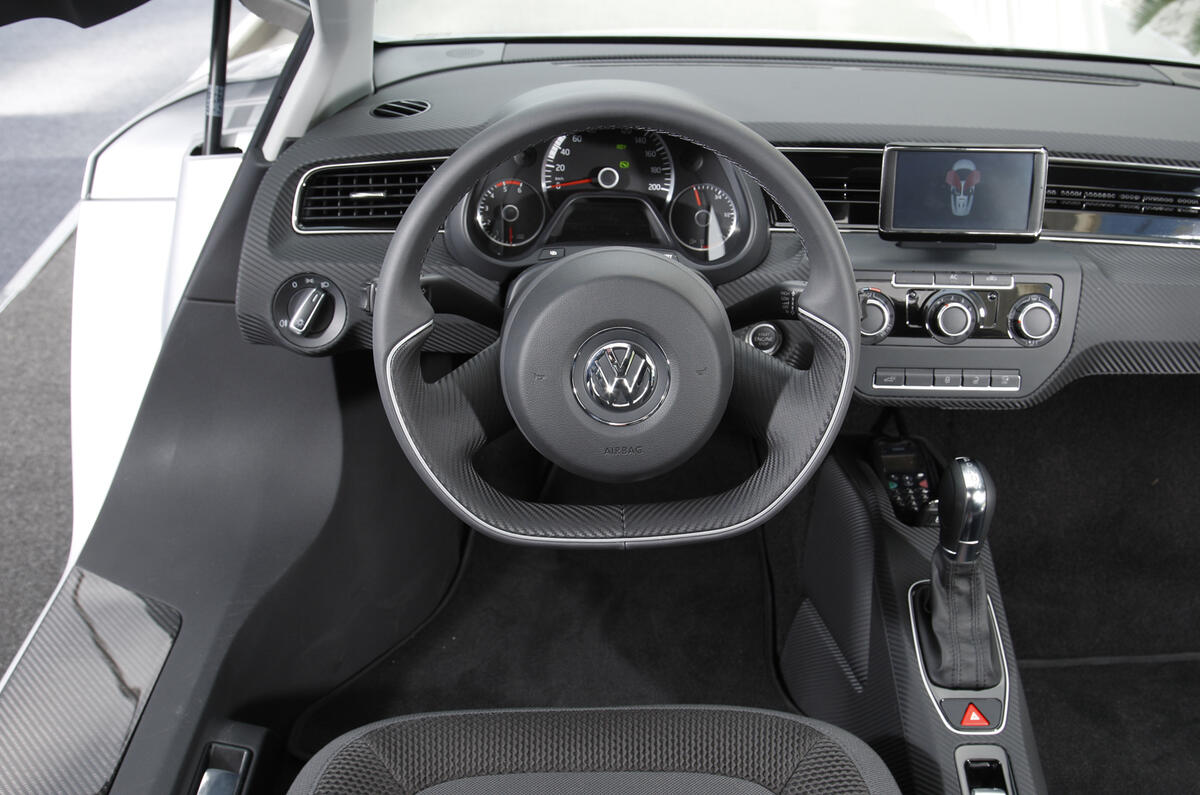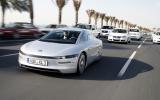What is it?
The 2008 Climate Change Act set a legally binding target for the UK to reduce its CO2 emissions by at least 80 per cent by 2050. According to Volkswagen, if it reduced the average CO2 emissions of its vehicles by the same amount, the typical car of 2050 would need to produce CO2 emissions of just 24g/km. That’s 313mpg in Imperial measurements.
Incredibly, Volkswagen’s XL1 concept has hit that target with about 40 years to spare.
The reason it reached such a feat is a quirk of the official NEDC fuel consumption test. The XL1 is a plug-in hybrid, which means the test cycle allows a full charge of the battery to be included in the car’s range, yet the charging of the battery is rated as CO2 neutral. Take the 5kWh battery pack out of the CO2 equation and the XL1 returns a more realistic 141mpg. With a 10-litre tank, the car’s real-world range is 310 miles. With a full charge of the battery and maximum assistance from the electric motor, the range rockets to 688 miles.
Thomas Ingelath, who led the design work, described the creation of the XL1 body as “intensely technical”, with designers and wind tunnel engineers shunting backwards and forwards over the tiniest of radiuses.
Such was the effort deployed to keep the drag coefficient low that VW’s super-computers spent whole weekends cranking out simulations.
The upshot is just delectable – a sort of 50th percentile supercar, immaculately surfaced and detailed. Its Cd is just 0.186, 2.5 times lower than a contemporary Golf and better even than its conceptual predecessors.
However, in the efforts to build a much more serious and safe machine, the XL1 tips the scales at 795kg - virtually the same as a Mk1 Golf.
What’s it like?
When you stand next to the XL1, it looks impossibly small and it’s hard to imagine it swallowing two full-size adults. Even when the gullwing doors swing open, it doesn’t look promising. However, it is pretty easy to get into, despite the combination of the wide carbonfibre sill and very low (carbon-shell) seat. It then takes just a few seconds to realise that this is fantastically well planned interior, with a superb, slightly laid-back driving position.
Despite sitting so low and the fact that the A-pillar partly snakes across in front of the driver, the view forward out of the car is superb. The staggered seat position – the passenger sits further back than the driver – is inspired. Really, the cabin doesn’t feel cramped; it feels positively spacious.
The interior – much of the structure is made from “natural fibre” – is beautifully conceived and immaculately styled, from the tiny, flat-bottomed steering wheel to the shift lever. Indeed, the whole cabin – which weighs just 80kg – feels properly fettled and close to production quality. The digital rear-view mirrors – which have iPod-style screens let into the door skins – are a major advance.
The XL1 starts off silently via the battery and 26bhp electric motor (the combination has a range of 22 miles). Call up some acceleration and the 47bhp twin-pot engine fires up, initially, without the driver noticing, via the ‘pulse starting’ technique (this uses the electric motor to spin the diesel engine up to speed). However, once the combustion starts, the cabin is filled with a very odd metallic thrum from engine, which is mounted hard up against the rear bulkhead. But that, and the occasional resonance that’s generated by vibration through the hollow sections of the carbon tub, are all things that will be refined away over the expected 24-month pre-production development period.













Join the debate
Add your comment
Re: Volkswagen XL1 Coupe
I shall bide my time and wait to see what the "production model" looks like and if its figures bear any resemblance to these being bandied about. Still if it succeeds, then I cannot wait for the XL5 it should be a Fireball.
Re: Volkswagen XL1 Coupe
It would make an excellent base for a new supercar. Just think about it - something with the performance of a Porsche 911, and the economy of a Polo bluemotion!
Re: Volkswagen XL1 Coupe